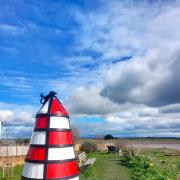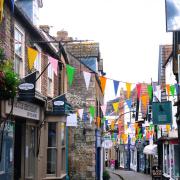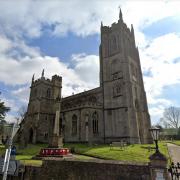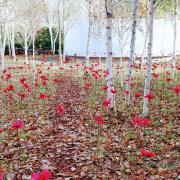Cathrine Courtenay visits Tarr Steps to learn all about Somerset’s very special Atlantic woodlands

You don’t have to spend long in the woods at Tarr Steps to realise that you’re somewhere special. Trees are thick with mosses and lichens, as are the rocks and boulders that shape the ground and lie scattered in and around the river that wanders through this beautiful valley. Breathe deep, inhale the damp air with its earthy aroma of fern and humus-rich soil.
It’s not surprising to discover that these Exmoor woods, owned and managed by the Exmoor National Park Authority, are a National Nature Reserve, part of the Barle Valley Site of Special Scientific Interest (SSSI) and one of the most important areas of ancient woodland in the country.
What does come as a surprise is to learn that this nature reserve is also a rainforest.
The South West, from Cornwall to the west of Somerset, is home to several temperate rainforests. They are even rarer than the tropical rainforests that you’d normally associate with the term. These forests, made up of native deciduous trees of varying ages, are characterised by having damp and humid conditions, with streams or rivers creating boggy areas and a mass of mosses, lichens, ferns and liverworts. They are also at least 400 years old – that’s how long it takes to create the conditions necessary for such a diverse range of plant growth.

For the past year or so, there has been a campaign to help protect and manage these forests as well as spread awareness and understanding of how special they are. The campaign, Building Resilience in South West Woodlands, is being led by the charity Plantlife, which was awarded £433,700 by the Heritage Lottery Fund towards the project.
A major focus is to protect the many lichens that grow in these rainforests and I’ve not even left the car park before project manager Rachel Jones points out ‘usnea articulate’, or the wonderfully named string-of-sausages lichen. A section has fallen off a tree alongside the path that leads down to the famous clapper bridge. As is the case with so many lichens, its name perfectly captures its unique appearance, with its plump, puffy sections hanging on little strings.
As we walk through the woods, alongside the River Barle, Rachel explains how she and her colleagues are working with partner organisations, like the National Trust, and other wood owners to share knowledge and find ways of better managing and protecting the rainforests.
One of the biggest ways to protect their future is through education, or more precisely, by encouraging all ages to get to know their woods; so Rachel leads woodland walks, sometimes with a theme, say an introduction to lichens or ferns, or it may be a mum and toddler session or simply bringing small groups into the woods to enjoy the atmosphere, and ‘have a little wander around’.

Tarr Steps and other woods are recognised for their unique status, but there could be many more across the South West, says Rachel, which is why Plantlife is encouraging people to take Rapid Woodland Assessments. Not as technically scary as they seem, this is basically a way to quickly identify if a wood meets the temperate rainforest criteria, or if it could. By taking part in a two-hour training session, people can learn how to spot the signs and understand their own local woods. These sessions have been incredibly popular, with all ages, and people can go on to help Plantlife gather information on other woods, so building up a map of where they are and helping preserve them.
“People have been sending in results and we’ve had around 150 so far. Some of the woods we know, but others are new,” says Rachel.
We sit for a while by the river. “I’m big into cups of tea and biscuits,” says Rachel, as she pulls out a flask of coffee and a Chelsea bun – which she brought with her, all the way from Maiseys bakery in Othery. It’s a good way to get people drawn in, she explains, by providing a chance to sit and absorb the surroundings. In Japan people go ‘forest bathing’; it’s recognised that being in woods can provide benefits to human health - it can lower stress levels and even boost the immune system. The Plantlife team runs forest bathing sessions, where people are encouraged to simply enjoy being the woods, to quietly take in their surroundings.
As we move on, Rachel produces a pocket microscope, which opens up a whole new way of seeing the lichens. Peering through the lens I can see that some are like barnacles, little moon craters, and others are on stalks - I imagine them as fairy trumpets. There are dog lichens too - brown curly ears with masses of little ‘teeth’ on the underside.
“It’s like a whole new world,” I say to Rachel. “That’s what people say all the time,” she replies. “One farmer who came on a woodland session said, ‘I’ve worked in this landscape all my life and never knew they were here’. I feel ashamed!”
Rachel says just knowing a little about these woods and their lichens means you have something to pass on to others, and the more knowledge is out there, the more people will care about them.
“You don’t need to know much, but it gives you the confidence to start a conversation.”
Before we leave Tarr Steps she shows me a single tree, which is covered in lichens, including a very rare lobaria pulmonaria, or tree lungwort. It looks like lettuce leaves, sprouting from the tree and it’s a beautiful sight.
She says: “These woods just feel different and there’s a reason for that – it’s because they are a rainforest.”
To find out more about Plantlife’s Rapid Woodland Assessment scheme go online to bit.ly/PlantlifeRWA



























